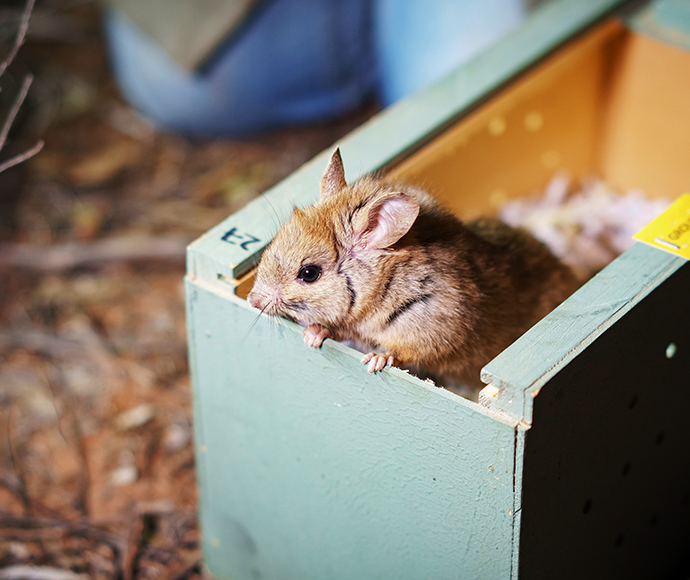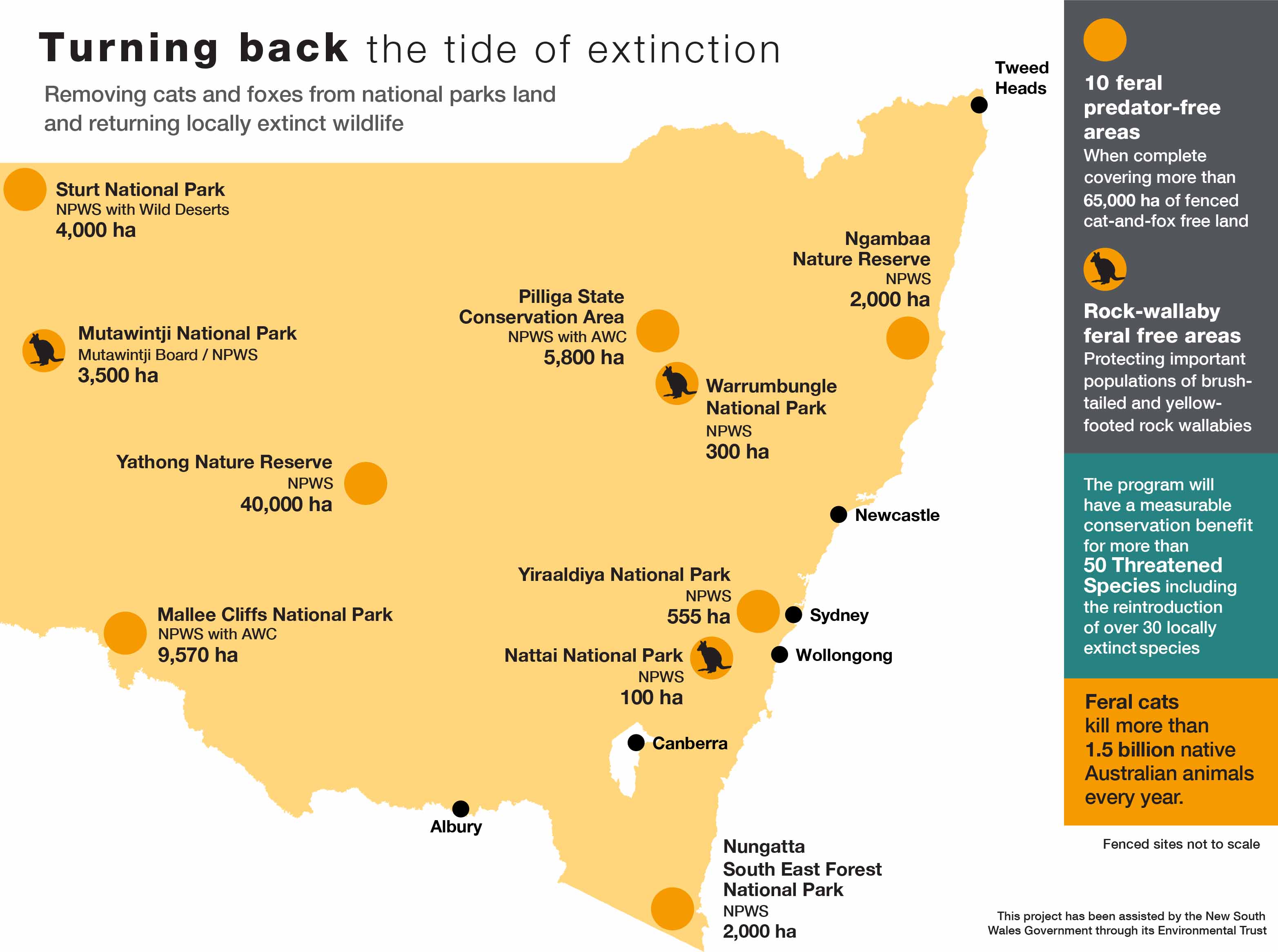Species return after 100 years
One of the 10 feral predator-free areas on NSW National Parks estate is at Mallee Cliffs National Park on Barkandji Country.
Eight species which have been missing from the landscape for over a century have already been reintroduced to Mallee country, including the:
- greater bilby
- greater stick-nest rat
- numbat
- brush-tailed bettong
- red-tailed phascogale
- Mitchell’s hopping mouse
- burrowing bettong
- bridled nailtail wallaby.
Mallee Cliffs National Park will provide safe haven for 10 locally extinct mammal species by 2026 thanks to this innovative project, which is a partnership between the NSW Government and Australian Wildlife Conservancy (AWC). Future reintroductions planned for the site include the Shark Bay bandicoot and the western quoll.
The feral predator-free area is a huge 9,570 hectares of semi-arid mallee woodland habitat, surrounded by a 37 km long fence which stretches 1.8 m high.
Once the fencing was finished in 2019, the area was cleared of feral animals, including the key predators, cats and foxes.
In addition to the 10 locally extinct species being reintroduced, the feral predator-free area provides conservation benefit to other resident threatened species such as the malleefowl.
A reintroduced male numbat sports a radio-tracking collar, enabling ecologists to track his movements over the first 3 months of his new life at Mallee Cliffs
Network of 10 conservation sites
The creation of a network of feral predator-free areas to reintroduce locally extinct mammals is an essential element of the NSW Government’s conservation strategy to reverse the decline and improve outcomes for threatened species at risk from predation.
It is a key element of delivering on a commitment to zero extinctions in NSW national parks.

A greater stick-nest rat is released into the safety of a feral predator-free area at Mallee Cliffs National Park
How they are going
Even at this early stage, teams are seeing encouraging signs of bounce-back, including:
- a threefold increase in the reintroduced population of greater bilby
- high rates of survival of all 8 mammal species reintroduced to date
- a markedly higher number of active malleefowl mounds inside the fence compared with outside
- higher trapping rates of small mammals inside the fence than outside.
World-leading conservation project
The Mallee Cliffs site is part of a network of 10 feral predator-free areas across the state. Once complete, almost 65,000 hectares of national park estate will be free of feral predators.
Right across this network of sites in New South Wales, locally extinct native animals will be returned to the landscape after long absences.
'Ecosystem engineers' like the greater bilby will again be able to dig burrows, aerate the soil and create niches for moisture, spores and seed and shelter sites for other species. They will help return the bush to what it was before and will provide conservation benefit for more than 50 animal species.
The feral predator-free area network is one of the most significant ecological restoration projects in NSW history.

Map showing the 10 feral predator-free rewilding sites across the NSW national parks estate